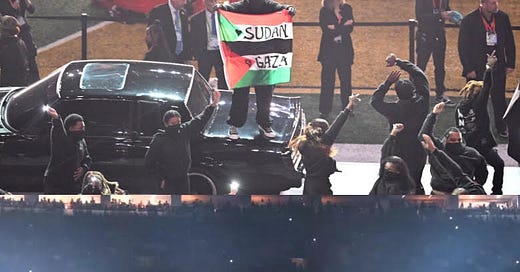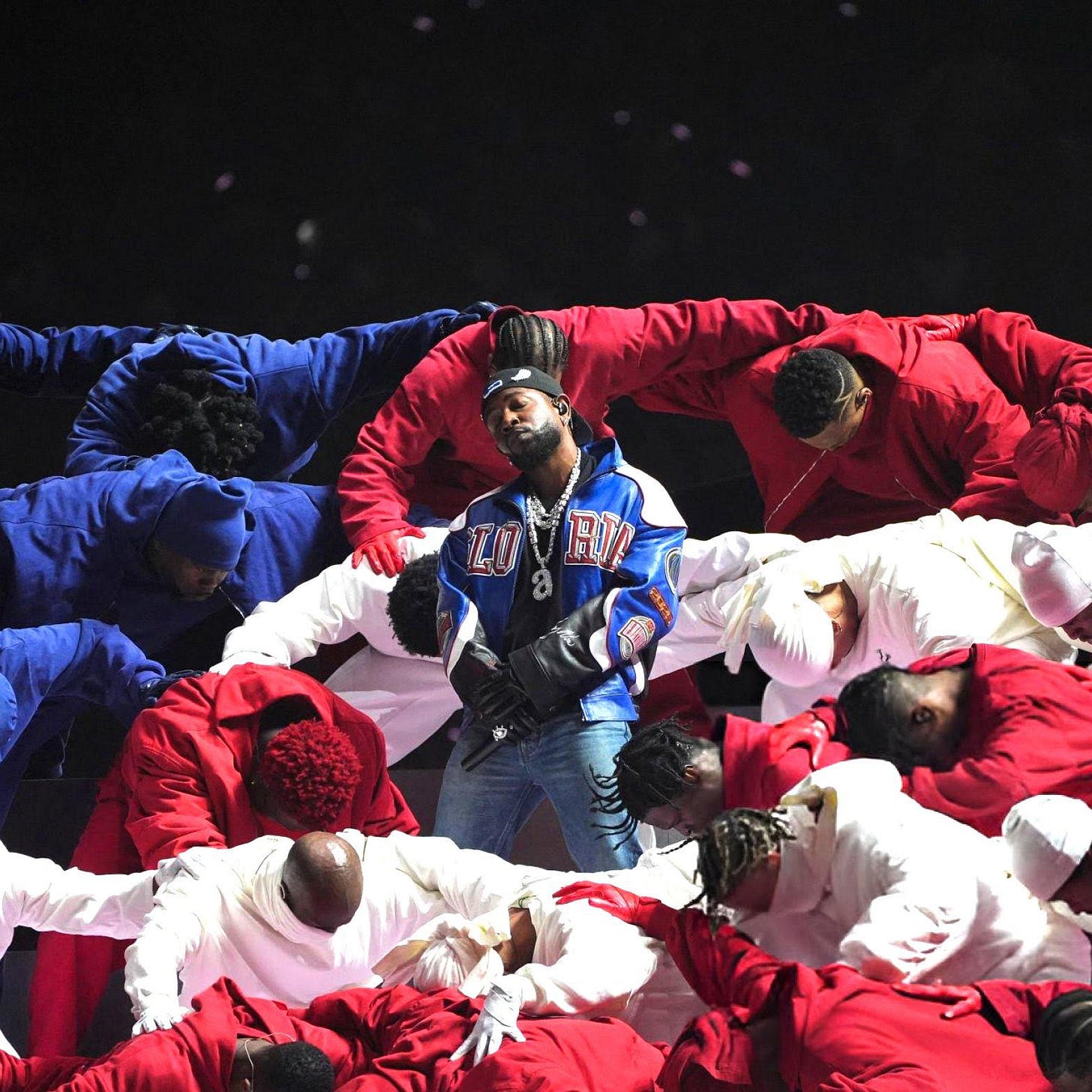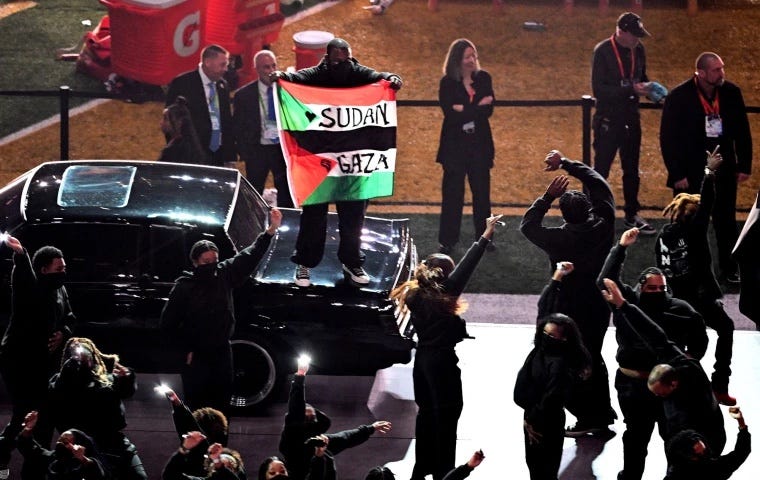What Kendrick Lamar’s Performance Says About Hip-Hop, America, and the Flag
Let's examine the tension between art, activism, and reclamation.
For decades, hip-hop has shaped and questioned American identity. The genre has celebrated the hustle and criticized the system equally, reflecting the tension between America and marginalized communities. And when rap takes the stage at an event as historically sanitized as the Super Bowl, those tensions come into sharper focus.
Kendrick Lamar took to the biggest stage as he became the first solo hip-hop artist to perform at the halftime show. In true Kendrick fashion, he set the timeline on fire with his performance and symbolic messages. Lamar’s Super Bowl Halftime Show wasn’t just a performance—it was a statement. But what exactly was he saying?
If you have no idea what’s going on during his set, Kendrick Lamar told a story with the help of visuals of the American flag made up of Black backup dancers, using Samuel L. Jackson as a narrator playing Uncle Sam and kicking off his performance with an unreleased song rapping “The revolution's about to be televised," Lamar said. "You picked the right time but the wrong guy.”
Throughout the timeline of Lamar’s career, he’s been considered one of the pinnacles of what it means to make statements in music, specifically coming from the blog era. Still, in the later parts of his career, Lamar has shown that he doesn’t have all the answers and that he and his peers are not exempt from questioning.
As the performance progressed, one sector of the show that held people’s attention and stirred up discourse was using the American flag and what reclamation would look like in 2025, especially now in another Donald Trump administration.
Is showing up an act of resistance, or does it risk legitimizing the very institutions that hip-hop critiques? Does using the American flag in a performance reclaim its meaning, or does it reinforce its power?
This flag represents a massive pool of symbolism regarding Black people, Americans, and their place in this country. As art does, it stirred up a massive conversation on the timeline about Black artists and creatives using the American Flag to push a message through their art and pose questions about it.
Now, things get blurry when the timeline wants to present revisionist history because Lamar is not the first to use the flag to express multiple truths about what the “American Dream” can look like for marginalized people. As the performance progressed, it opened the floor for questioning exactly what point we’re trying to drive home as Black creatives. Oftentimes, we place significant expectations on artists to be saviors and activists and overlook those putting their livelihoods on the line.
In a viral tweet, Joy De’Angela tweeted, “Kendrick literally protested, and taunted America in front of the president during America’s biggest sports event. Chefs kiss.” Though Lamar made a statement, comments like these can serve as a distraction, especially when, behind the scenes, a halftime performer was detained for flashing a Palestinian and Sudanese flag.
The flags presented throughout the performance symbolize the country's state, as many people fight to speak up and seek change while trying to survive. When artists engage with national symbols like the flag on massive platforms like the Super Bowl, the lines between protest and performance blur.
Did Kendrick create a show that showcased our political climate? That’s up for interpretation, but art doesn’t provide easy answers. It does demand that we ask better questions. Like much of his work, Kendrick's performance forces us to confront contradiction. Maybe true patriotism isn’t about allegiance or rejection but about engaging critically with the nation’s history, symbols, and future.







